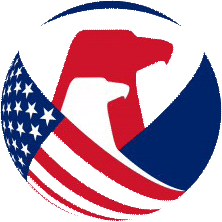A certificate of compliance requirement was in the original Consumer Product Safety Improvement Act passed in 2008 and signed by George W. Bush. It has taken 16 years for the Consumer Product Safety Commission to finally implement the full intended scope of electronic certificates of compliance as originally envisioned by Congress in 2008.
There have been multiple “beta” and “pilot” programs with many large institutional participants (especially many large retailers, e.g., Walmart and Target) giving feedback on the process. Only one or two small bike brands gave feedback per the current notice of proposed rulemaking, and it's not even clear they were in the pilot or beta programs.
The biggest issue I see for the bike industry is that the commission is proposing that the new rules take effect within 120 days of the new rules being passed; the passage date is not clear at this point. Given that the bike industry is slow to respond to large changes in the manner of doing business like this and that there has been zero coverage of this issue, I suspect there will be some pushback and scrambling going on especially by smaller brands.
These rules have been in effect for many years, but now that CPSC has teamed up with Customs and Border Protection (CBP) on this project, the certificates will need to be filed before importation using the elaborate electronic system called the Automated Commercial Environment (ACE). The CBP has completed its ACE interface and the Partner Government Agency Message Set, which now enable importers or their brokers to submit electronic import data.
The Supplemental Notice of Proposed Rulemaking (SNPR) to amend 16 CFR Part 1110 was first published on Dec. 8. All 65 pages are here, not including the 289-page Ballot package that the CPSC commissioners have to vote on and that contains more details about the Part 1110 rule change. Comments have to be received by Tuesday at 5 p.m. They can be made here.
Only finished products or substances that are subject to a CPSC rule, ban, standard, or regulation, are required to be tested and certified, and only such finished products that are imported into the United States for consumption or warehousing would be required to e-file certificates with CBP.
How the bike industry is affected
This is of course where things start getting murky, especially for the bike industry that has many segments: human-powered bikes, e-bikes, bikes intended for kids under 12, original equipment components, aftermarket components, and replacement components. Many industries don’t have to deal too much with replacement parts, such as the toy industry.
Here is a quote from CPSC’s response to one comment made previously:
Comment 38: Several commenters expressed confusion regarding the difference between certificates for component parts, for finished products, and for replacement parts of consumer products.
Response 38: Proposed § 1110.3(b) defines “component part” as a product or substance that is intended to be used in the manufacture or assembly of a finished product, and is not intended for sale to, or use by, consumers as a finished product. The SNPR defines a “finished product” as a product or substance that is “regulated by the commission that is imported for consumption or warehousing or is distributed in commerce.” The SNPR definition explains that parts of such products or substances, including replacement parts, that are imported for consumption or warehousing, or are distributed in commerce, and that are packaged, sold, or held for sale to, or use by, consumers, are considered finished products.
Only (1) finished products (2) subject to a CPSC rule must be tested and certified. (I added these numbers for clarification that it’s a two part-test.) Component part certificates are voluntary and are not required to accompany an imported component part, are not required to be furnished to retailers and distributors (as described in proposed § 1110.13(b)), and are not to be e-filed.
Not all replacement parts are finished products that require testing and certification. A replacement part of a consumer product that meets the definition of a finished product may be subject to Part 1110, if the replacement part is subject to a rule. For example, a stem for a bicycle that is sold to consumers as a replacement part requires a certificate, because stems, either as a stand-alone product or as part of a finished bicycle, must be tested for strength in accordance with 16 CFR 1512.18(g). (I tend to disagree with this part as the CPSC historically, even in recalls, has not taken this position that 16 CFR 1512 is a separately sold “component” standard but rather a “complete bike” standard.)
Additionally, parts of toys, such as doll accessories, that are sold to consumers as a separate finished product, must comply with all applicable rules, including for example lead in paint and/or lead content (Editor’s note: if it is a product intended for children under 12). If the same doll accessories were imported for manufacturing purposes and not for consumption or warehousing, (this is a small part of competent imports in the bike business) and were intended to be combined with a doll for sale, then such accessories would not be a finished product required to be certified until they are part of a finished product.
Majority of aftermarket products will need testing
So this means that 80% of the aftermarket products are going to need CPSC testing provided there is some requirement in a CPSC rule that arguably pertains to that bike product or component. If they are not “intended for children under 12” (kids product) that testing can be done in house apparently by the manufacturer or brand (subject to other requirements). If it is a kids product then a CPSC certified lab has to do the testing, which includes chemical testing (that does not meet California Prop 65 requirements, by the way).
E-bikes don’t have their own standard except for 16 CFR 1512, provided they meet the 20 mph requirement in the standard; if they don't, well then there are other issues to deal with. E-bike batteries, of course, don’t yet have a CPSC standard as they are not discussed in 16 CFR 1512, so in theory they escape the rule and these new testing and reporting requirements. How ironic as they are the biggest threat at this time and not really foreseen in 2008.
How this whole process is going to work as far as getting that testing data etc. into the CPB and CPSC computers is what has been the focus of multiple beta filing pilots. The importer of record has the responsibility. Not the foreign manufacturer. It's also not clear how this works with the tariff codes and what the timing is on the uploading of this data before the product hits U.S. shores. Import brokers are obviously a resource but won't likely be doing this for free. I do see a process where smaller companies are going to be allowed to access the data entry screens from the CPSC website using a special logon and portal.
The “new” CPSC Product Registry will allow importers, or their designees, to enter the certificate data elements via a user interface, batch upload, and/or Application Programing Interface (API) upload. The user interface is a step-by-step process, where the importer submits one certificate at a time. The batch upload allows the importer to submit multiple certificates using a Comma-Separated Value template. The API upload allows the importer to build an API connection via the product registry and their data systems to instantaneously enter certificates. Clearly, this is going to involve some training on the brand side of the equation.
So, for example, if you import 10 SKUs, or more or less all of the same model bike widget with 10 colors, every time you get a container shipped from Asia, you will know what the test requirement is for the widget, and you will have it tested by the manufacturer, unless it's a child widget, and that data will pretty much be cut and pasted each time using a CSV data spreadsheet. But it will need to be changed if you change suppliers or test requirements or anything else on the product changes, usually SKU’s changes.
Import enforcement currently lacking
The whole rationale for this rule change and disruption is as follows: Currently, CPSC's import enforcement methodology is labor-intensive and lacks an efficient means of using product-specific data to identify potentially non-compliant products. CPSC co-locates staff alongside CBP staff at ports of entry to target shipments for examination.
Once identified, staff request that CBP place a shipment on hold and transport it to an examination station for CPSC inspection; an examination hold creates delay that costs businesses and CPSC time and money. Accordingly, stakeholders and CPSC have a common interest in reducing examinations of compliant products and maximizing examinations of products that are likely to be violative. Currently, certificates are collected only after a shipment is stopped for examination; certificate data are not used to target shipments for examination. Using certificate data for more precise targeting would maximize examination efficiency for stakeholders and staff.
Using certificate data can also improve CPSC's ability to target low-value shipments. CPSC's current targeting capabilities were designed for larger commercial shipments for which the commission receives CBP data. CPSC's port staff is currently unable to pinpoint with a high degree of certainty potentially non-compliant and hazardous products in low-value shipments, which CBP refers to as “de minimis shipments,” and international mail shipments.
As we all know the de minimis shipments to consumers of batteries below an $800 value is where we are having a problem with low-quality batteries. But this new certificates filing rule won't fix the e-bike battery problem as there is not currently a CPSC standard specifically regarding batteries and as such no certificate filing will be required.
The biggest issue I see right now is that the SNPR proposes a 120-day effective date for a final rule. So that means after the comments on this rule are received, I expect that the rule will be final in less than six months, and once that happens, there will be another six months to get ready for the enforcement. Hopefully, that will be enough time for the industry to get ready.
This is going to be a four-step process for each product: First, companies need to decide what CPSC rules pertain to their specific products; second, they need to determine if they are products intended for kids under 12 (a whole other analysis); third, they need to decide on a test protocol for their products and whether it can be done in house or requires a CPSC certified lab (see Step 2); then finally they need to set up an account with CPSC and learn the methods by which they have to enter all this data on an ongoing basis and how that data entry timeline coincides with the timely shipment and receiving of the product.
Clearly there is lots of work to be done on this by brands. Our office is going to be assisting clients with this issue going forward as there are a number of issues that have to be dealt with that are more legal than scientific or logistical but the latter two issues are surely ones that must be addressed as well.
Steven W. Hansen is an attorney who represents product manufacturers, distributors and retailers in product liability and other lawsuits and provides consultation on all matters related to the manufacture and distribution of e-bikes and other consumer products. For further questions visit www.swhlaw.com or email legal.inquiry@swhlaw.com
The information in this article is subject to change and may not be applicable in your state or country. It is intended as a thought-provoking discussion of general legal principles and does not constitute legal advice. Any opinions expressed herein are solely those of the author.




